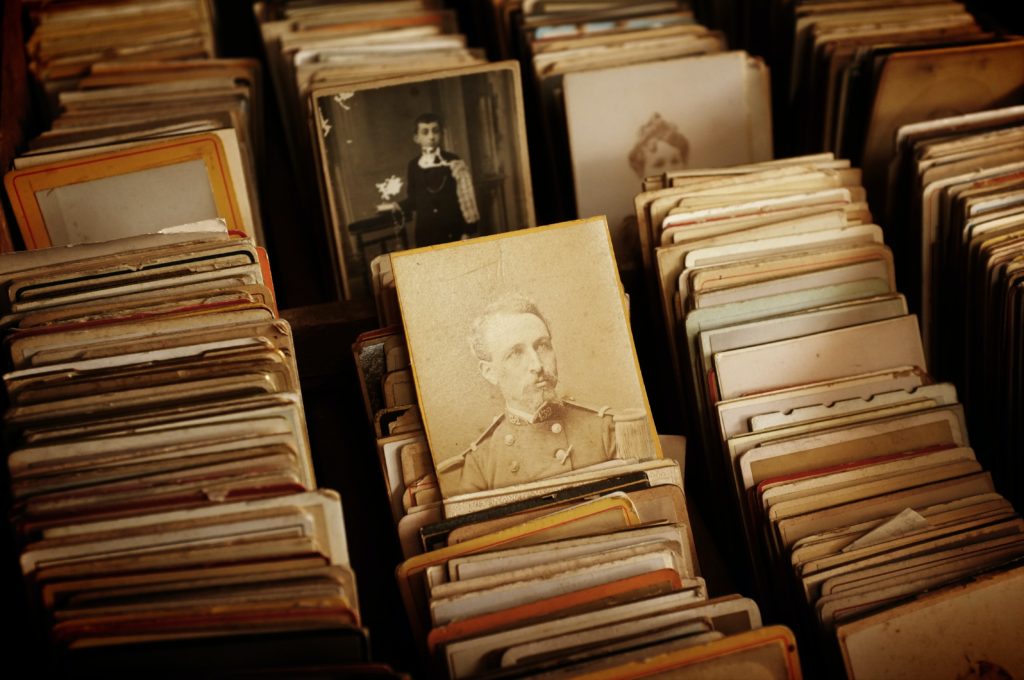AFH uses an oral history methodology to write family histories. We value oral history’s ability to capture a story from multiple viewpoints, preserve the storyteller’s voice, and its flexibility in storytelling. These core ideas create family histories that are authentic, original, and organic.

Modern oral histories are typically used to gather multiple stories from a community (such as participants in a certain event or a group of farmers in a particular area), to document an event from multiple angles (such as a war or battle), or as in our case, stories from a family. Unlike memoirs or biographies, oral histories set out with the aim of collecting multiple stories with as little editing as possible and are, thus, ideal for family histories. Oral histories are as close as possible to hearing a story directly from the source without distilling the emotion or voice of the narrator, preserving the story as it was meant to be told. In “preserving insights not found in printed sources” (source), oral histories enable historians and the public to read between the lines, elucidating details and stories that would not otherwise be told.
When written, oral histories also tend to be more casual and written from a first-person point of view. Not strictly academic or formal in format, this approach allows oral histories to flow like a conversation and retain the voice and emotion of the speaker, not distilled by heavy editing. They capture a more genuine and intimate, and therefore organic and true, portrait of the past.
The difference between oral histories and memoirs is that memoirs are personal or family histories that are written and edited by a ghostwriter or editor, which distills the original story and makes it into a longer narrative. While useful for writing books, memoirs do not convey the same emotion and authenticity as an oral history does. This lack of formality also means that oral histories are more flexible – they can record periods of time of varying length, a single event from multiple points of view, focus on different themes or ideas, and more. In following these ideas and principles, AFH uses oral histories to create a product that is adaptable to its customers needs. Our product is modular in nature and can change to meet customers’ needs.
Oral histories are humankind’s oldest form of storytelling and preservation. They have been used informally since time immemorial for communicating family stories, legends, and more for generations. Around the world, oral histories have been part of the social fabric of different cultures for generations, from tribal histories in Syria to narratives of Sikh independence in India. In North America, the origins of oral histories lie in Indigenous peoples using oral histories to transmit their histories and myths, with the transmission of oral history itself becoming a ritualized and sacred process, thus ensuring that stories were communicated as authentically as possible to create an unbroken chain of transmission.
As a formalized academic discipline, oral history has a long history in the United States. The origins of academic oral histories lie in the late 19th century with anthropologists collecting recordings on phonograph cylinders. The stories were relatively normal – people’s everyday lives, farmers talking about their farms, people talking about their family, and war veterans discussing their experiences; however, it was the way that these stories were told and collected that set them apart. In travelling through Appalachia and the newly-settled American West, these early “folklorists” formalized both the practice of collecting oral histories as well as their scope and content. Several decades later, oral history as a formalized discipline grew with the Federal Writers’ Project, a Great Depression-era Works Progress Administration (WPA) initiative designed to record stories of Americans from all walks of life, with an emphasis on collecting accounts from Civil War veterans, survivors of slavery, and other major historical events. After WWII, several universities established dedicated offices for oral histories, with the goal of creating, transcribing, and preserving oral histories. The most famous of these is the Columbia Center for Oral History Research, founded in 1948 by influential historian Allan Nevins, a major proponent of oral histories.
Nevins’ work helped create the modern oral history. As history has become a formalized and written discipline over the years, oral history has pivoted and adapted, becoming a more niche storytelling methodology used to capture and document singular or unique experiences. In modern times, oral histories are used to make records of tragedies (war, natural disasters, etc.), events (the Olympics, political revolutions, wars), and communities (labour unions in the U.K., Soviet farm collectivization in Uzbekistan, tribes). Valued for their informal, off-the-cuff nature, oral histories produce an organic and direct historical record. In short, modern oral histories capture the stories and narratives of events or people that may fall through the cracks of written histories, talking to people from all walks of life to create a “history from below”.
All of this has brought us to the modern day, when oral histories are such a part of the fabric of contemporary historiography that we may not even realize we are collecting oral histories. The aim of AFH is to bring these practices and ideals to you, making them accessible and available to anyone. AFH’s oral histories bring a refreshing honesty and straightforwardness, drawing on the methodology and principles of early oral history practitioners, who converted “normal” stories into the “official” historical narratives they deserve to be, situating them in an appropriate historical context.
Video: What is Oral History? from The Oral History Centre
An excellent summary of what oral histories are, their goals, and more.
Video: What is Oral History? from the Oklahoma State Library
An shorter summary of oral histories, highlighting its origins and original uses.